Abstract
Young rats were not able to expel adult N. brasiliensis infections even when the worms were damaged by antibodies and the young rats were given all the cellular components (sensitized lymphocytes and bone marrow cells) shown to be necessary for the expulsion of antibody-damaged worms from adult rats. In contrast, most of the worms were expelled from young rats given sensitized lymph node cells on the day of a larval infection. These results show that the reduced ability of young rats to respond to infection by producing sensitized lymphocytes only partly explains their inability to expel the worms. It was not possible to explain the failure of young rats to expel adult worms by hypothesizing that they develop an active factor which prevents the cells from acting on the worms. It is also unlikely that worms persist in young rats because they differ in their susceptibility to cells compared with antibody-damaged worms from mature rats. This work suggests that the immune mechanism which affects the immature stages of this nematode may differ from that which controls the adult stages.
Full text
PDF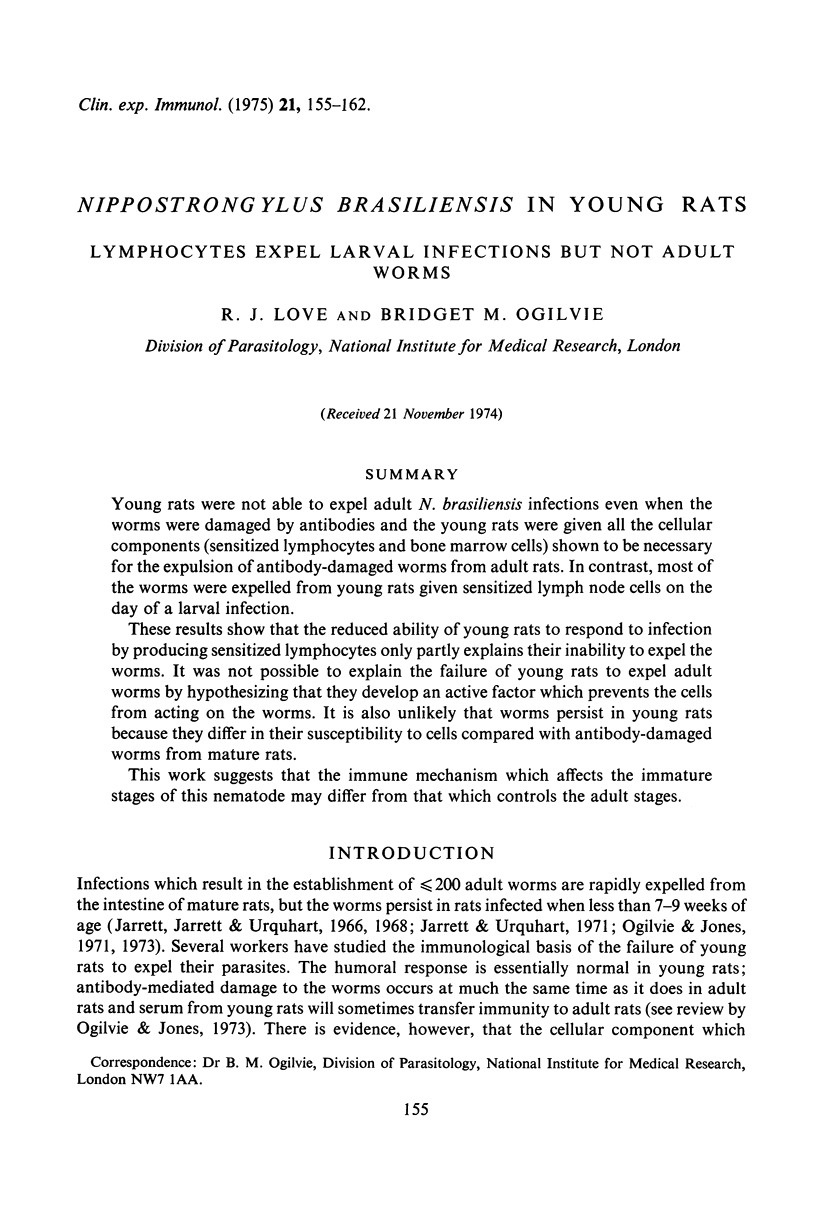

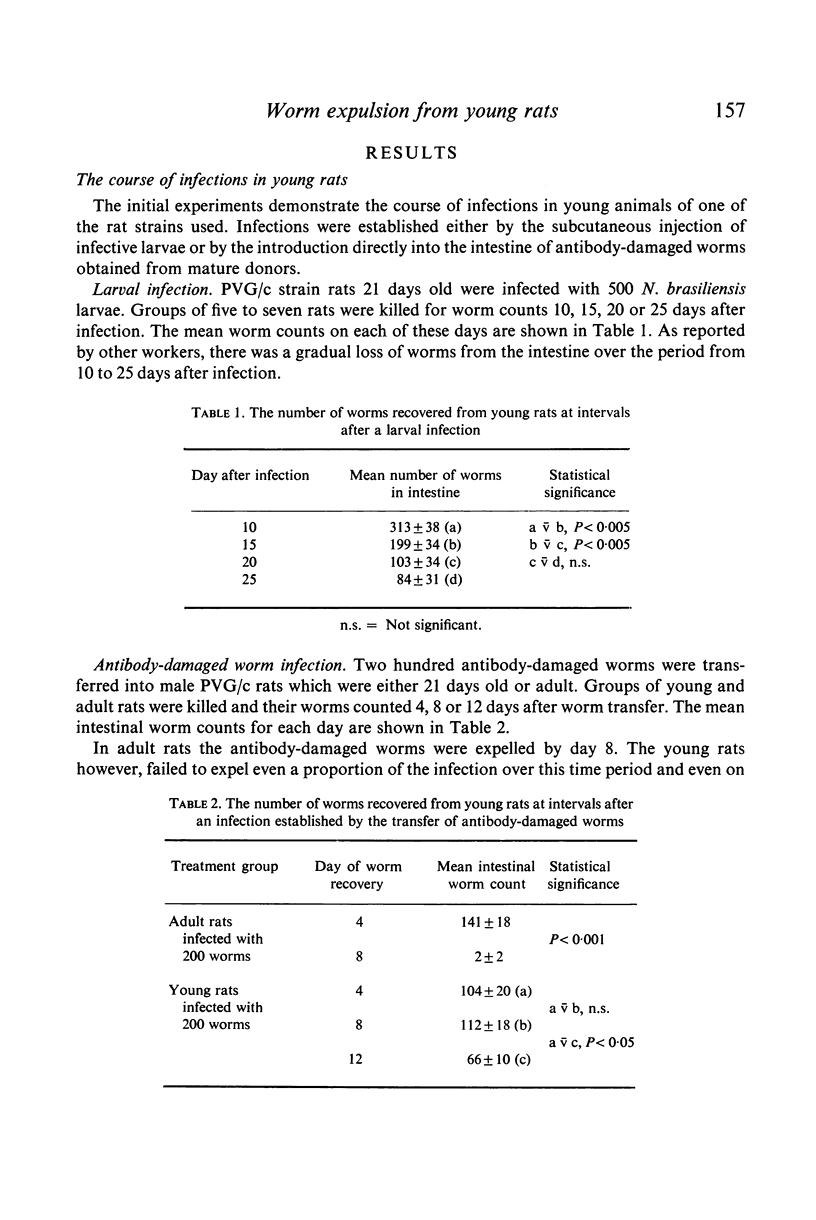
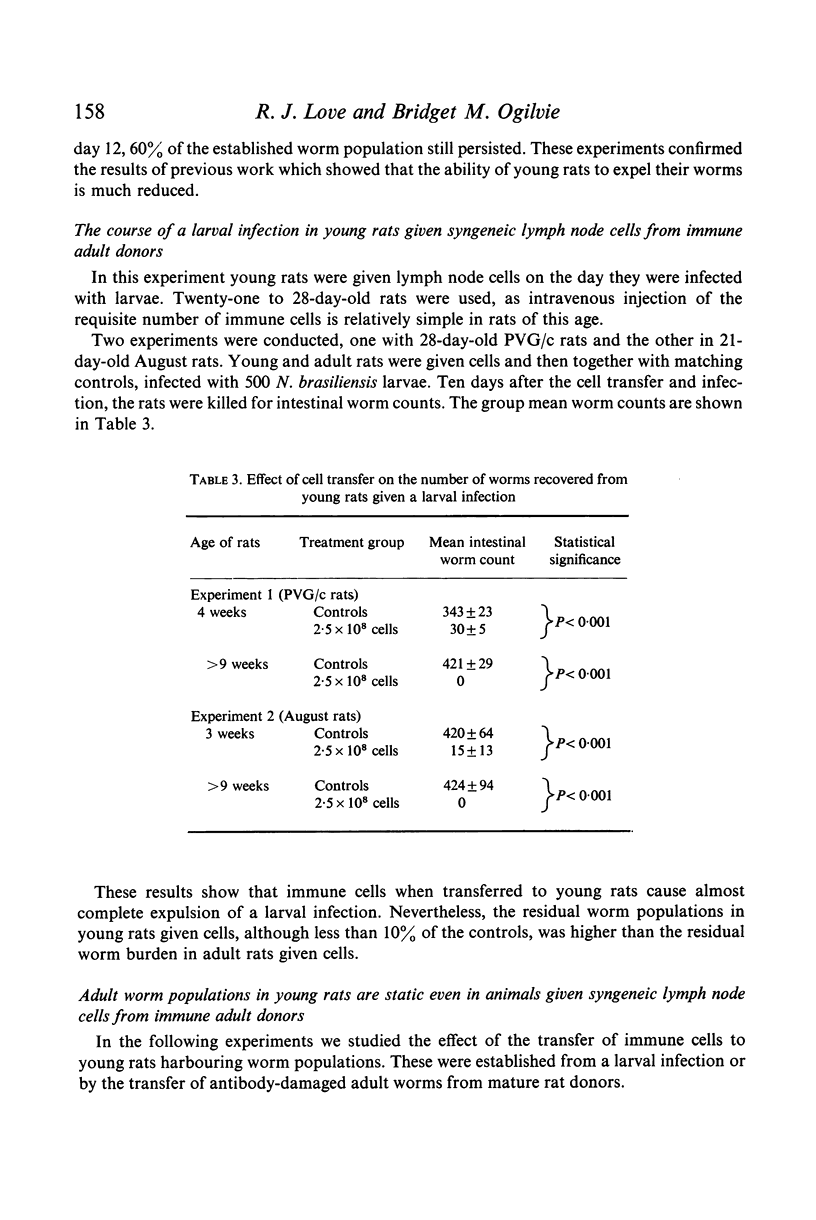


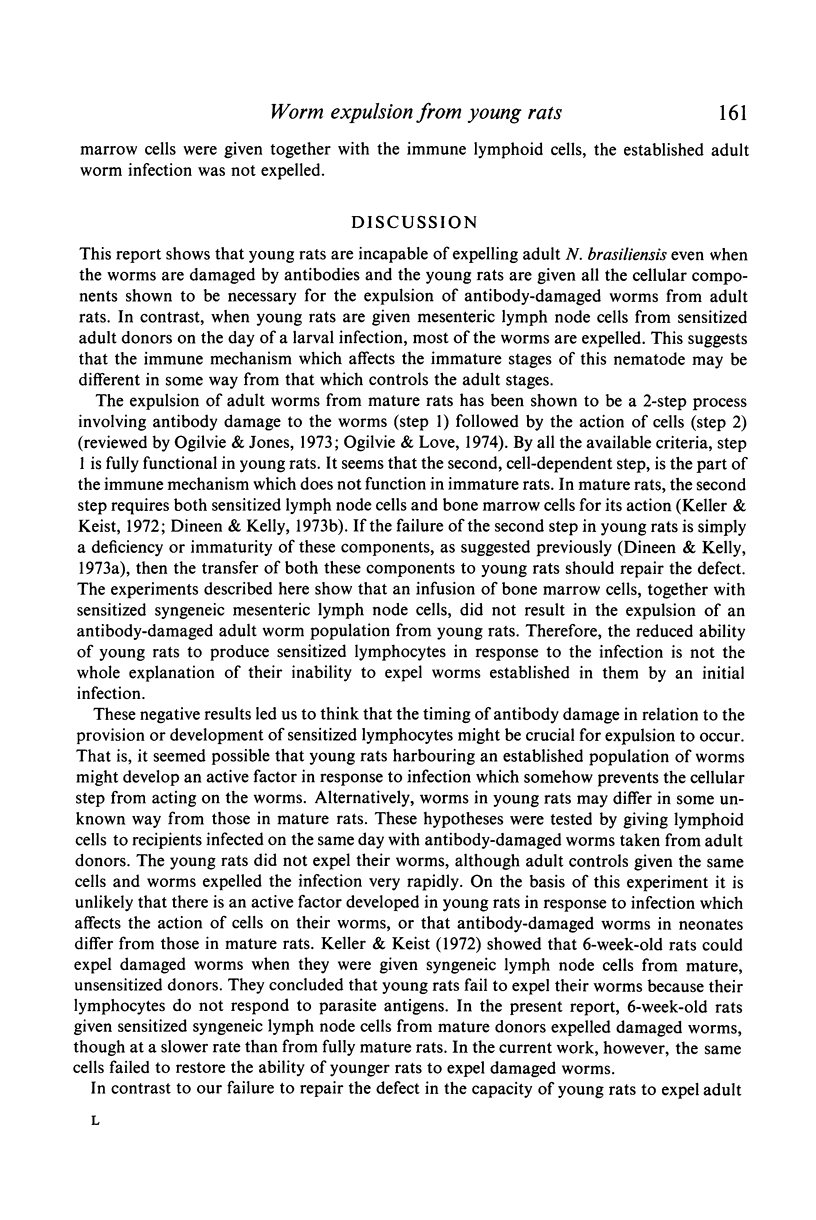
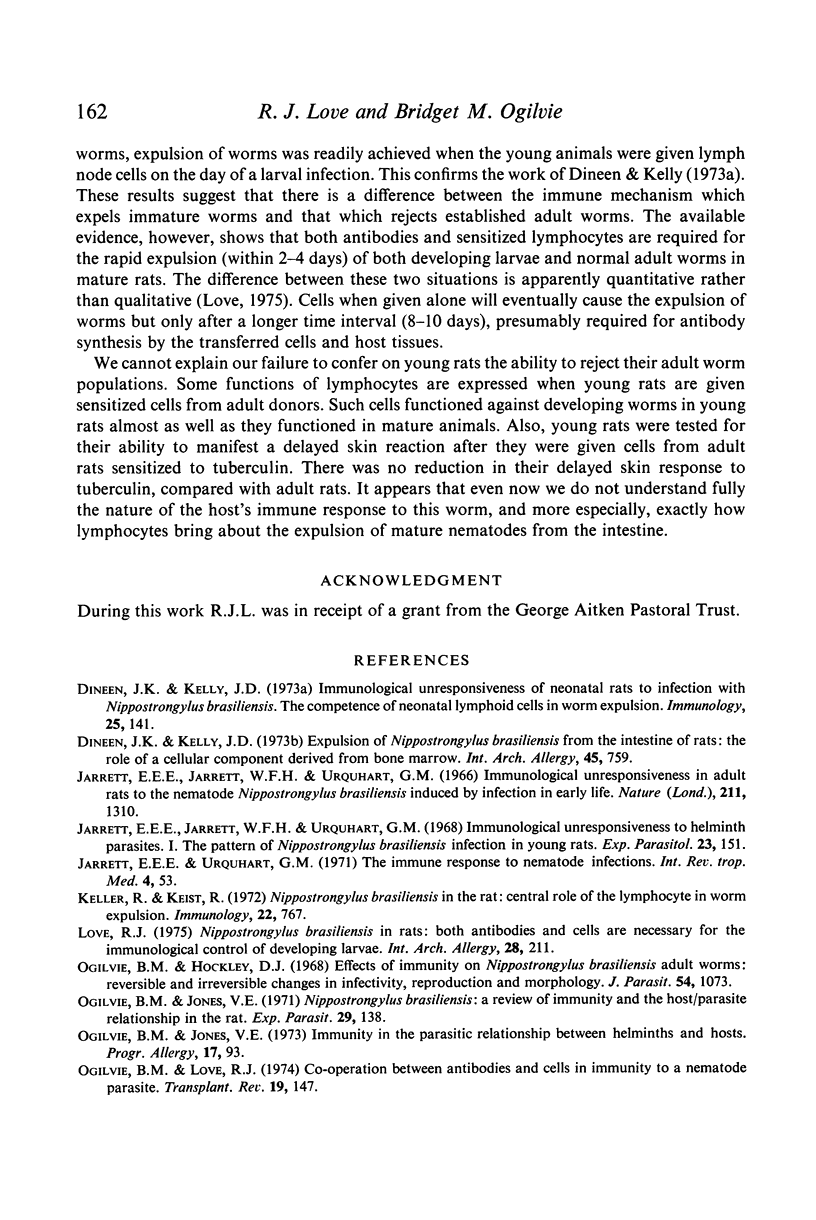
Selected References
These references are in PubMed. This may not be the complete list of references from this article.
- Dineen J. K., Kelly J. D. Expulsion of Nippostrongylus brasiliensis from the intestine of rats: the role of a cellular component derived from bone marrow. Int Arch Allergy Appl Immunol. 1973;45(5):759–766. doi: 10.1159/000231075. [DOI] [PubMed] [Google Scholar]
- Dineen J. K., Kelly J. D. Immunological unresponsiveness of neonatal rats to infection with Nippostrongylus brasiliensis. The competence of neonatal lymphoid cells in worm expulsion. Immunology. 1973 Jul;25(1):141–150. [PMC free article] [PubMed] [Google Scholar]
- Jarrett E. E., Jarrett W. F., Urquhart G. M. Immunological unresponsiveness in adult rats to the nematode Nippostrongylus brasiliensis induced by infection in early life. Nature. 1966 Sep 17;211(5055):1310–1311. doi: 10.1038/2111310a0. [DOI] [PubMed] [Google Scholar]
- Jarrett E. E., Jarrett W. F., Urquhart G. M. Immunological unresponsiveness to helminth parasites. I. The pattern of Nippostrongylus brasiliensis infection in young rats. Exp Parasitol. 1968 Oct;23(2):151–160. doi: 10.1016/0014-4894(68)90053-2. [DOI] [PubMed] [Google Scholar]
- Jarrett E. E., Urguhart G. M. The immune response to nematode infections. Int Rev Trop Med. 1971;4:53–96. [PubMed] [Google Scholar]
- Keller R., Keist R. Protective immunity to Nippostrongylus brasiliensis in the rat. Central role of the lymphocyte in worm expulsion. Immunology. 1972 May;22(5):767–773. [PMC free article] [PubMed] [Google Scholar]
- Love R. J. Nippostrongylus brasiliensis infection in rats. Both antibodies and sensitised cells are necessary for the immunological control of developing larvae. Int Arch Allergy Appl Immunol. 1975;48(2):211–219. [PubMed] [Google Scholar]
- Ogilvie B. M., Hockley D. J. Effects of immunity of Nippostrongylus brasiliensis adult worms: reversible and irreversible changes in infectivity, reproduction, and morphology. J Parasitol. 1968 Dec;54(6):1073–1084. [PubMed] [Google Scholar]
- Ogilvie B. M., Jones V. E. Immunity in the parasitic relationship between helminths and hosts. Prog Allergy. 1973;17:93–144. [PubMed] [Google Scholar]
- Ogilvie B. M., Jones V. E. Parasitological review. Nippostrongylus brasiliensis: a review of immunity and host-parasite relationship in the rat. Exp Parasitol. 1971 Feb;29(1):138–177. doi: 10.1016/0014-4894(71)90021-x. [DOI] [PubMed] [Google Scholar]
- Ogilvie B. M., Love R. J. Co-operation between antibodies and cells in immunity to a nematode parasite. Transplant Rev. 1974;19(0):147–169. doi: 10.1111/j.1600-065x.1974.tb00131.x. [DOI] [PubMed] [Google Scholar]


